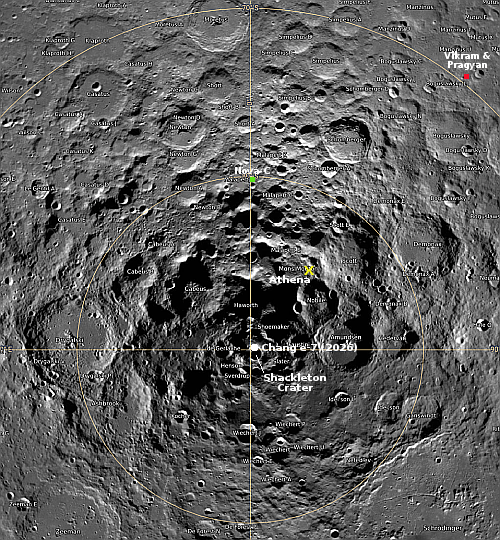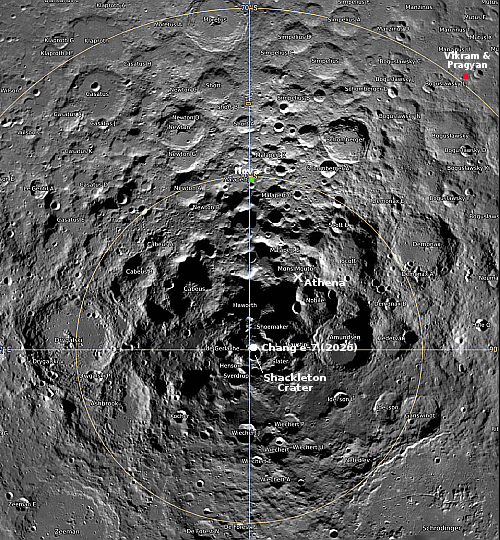Watch the landing of Intuitive Machines’ Athena lander on the Moon tomorrow

NASA has now announced its live stream arrangement for the landing of Intuitive Machines’ Athena lander on the Moon tomorrow at 12:32 pm (Eastern).
The live stream will begin about sixty minutes before landing. The NASA live stream is available here. I have also embedded it below.
The map to the right shows the landing site by the yellow “X”, about 100 miles from the Moon’s south pole on a high relatively flat plateau dubbed Mons Mouton. This will be the closest any lander has come to the pole, and was the original site chosen for NASA’s now-canceled VIPER rover. If the landing is successful Athena will land close to a small crater that is believed to have permanently shadowed areas. The plan had been to have VIPER travel into it. Now the small Grace hopper that Athena carries will attempt this instead.
This will also be the second attempt by Intuitive Machines to soft land on the Moon. Its first attempt last year was able to land and communicate back to Earth, but the landing was not completely successful. The lander, named Nova-C as well as Odysseus, was moving too fast sideways when it touched down, thus breaking one leg so that the lander fell on its side.
» Read more

NASA has now announced its live stream arrangement for the landing of Intuitive Machines’ Athena lander on the Moon tomorrow at 12:32 pm (Eastern).
The live stream will begin about sixty minutes before landing. The NASA live stream is available here. I have also embedded it below.
The map to the right shows the landing site by the yellow “X”, about 100 miles from the Moon’s south pole on a high relatively flat plateau dubbed Mons Mouton. This will be the closest any lander has come to the pole, and was the original site chosen for NASA’s now-canceled VIPER rover. If the landing is successful Athena will land close to a small crater that is believed to have permanently shadowed areas. The plan had been to have VIPER travel into it. Now the small Grace hopper that Athena carries will attempt this instead.
This will also be the second attempt by Intuitive Machines to soft land on the Moon. Its first attempt last year was able to land and communicate back to Earth, but the landing was not completely successful. The lander, named Nova-C as well as Odysseus, was moving too fast sideways when it touched down, thus breaking one leg so that the lander fell on its side.
» Read more




